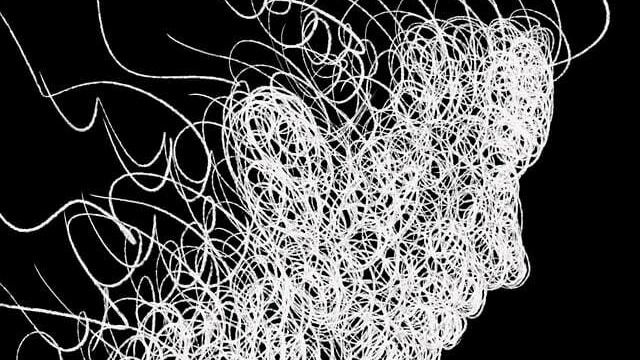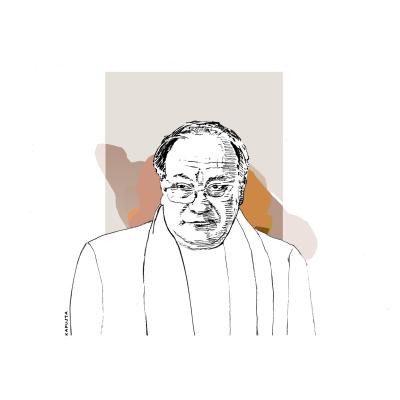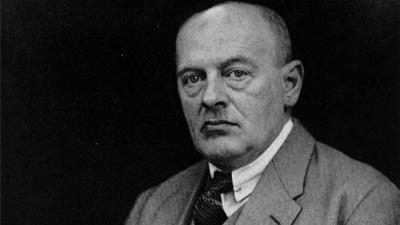There is perhaps no more heated dispute in culture than that concerning contemporary art. The number of excesses, provocations was and is so great that the whole sphere has become one of excess and provocation. And the sharpness of the disputes seemingly only concerning aesthetics conceals the wars of worldview.
Democratic societies are subject to a permanent process of differentiation into classes. Aesthetic choice is a sign of what class we aspire to. Tell me what to listen to, what exhibitions you go to, and I will tell you your place in the ever-changing swirl of social stratification. The chaos of modern art, the fashionable kind, bubbles up from this whirlpool to a large extent. And the very feeling of chaos is strong due to the “work of tradition”, which reminds us that there were rules, canons and art had great aspirations. Not coincidentally, Balzac stated that revolution kills art. After two hundred years of revolution, the image of modern art as a whole was nightmarish. Nor is this hypothetical totality unless we agree on the word “chaos”. Here an important caveat. There are bright, single points in this picture of degradation, i.e. interesting artists.
An attempt to describe the modern art world
Attempting to systematise what is happening in the visual arts seems like an impossible task. Systematics and chaos are at odds with each other. However, reason cannot desert us. Until recently, this was possible. For example, the systematisation of art objects, description based on classical national characteristics, or description according to the rules of aesthetics, which at some point were arbitrarily considered a suspicious field. Until the 1990s, the division between German, Italian or Polish art was not considered an anachronism. What was sought and found was what was unique to the culture.
Globalisation and the first twenty years after the “Cold War” changed this with the foolish belief in the end of history, a fable to which left-wing artists, the forerunner of a potential revolution on a global scale, were and are understandably susceptible. The art world’s distancing from national traditions revealed a paradox particularly evident at the Venice Biennale. At this most extensive overview of the chaos of art, national pavilions were not abandoned. It is impossible to find a criterion other than the national to make an exhibition comprehensible at such an event. Organising the expression of hundreds of artists is a titanic task for a curator who must manage this chaos and does so through an ideologised leftist agenda.
The contemporary art world presents itself as cosmopolitan and following the path of globalisation (and money). It is supposed to help people better understand a complex world and gently indoctrinate. Art as an aesthetic sphere is secondary to this imperative to engage with “weighty social issues” and remodel the world.
There is a great deal of confusion within it. Above all, art has become, as a consequence of the process of secularisation, a parasacral space. In the Western world, this phenomenon has been observed on a massive scale since the 1960s. The art world has begun to swell and spin ever faster.
The years of economic prosperity from the 1980s to the economic crisis of 2008 were a boom period for the art market, and as Sara Thornton has noted – people were more willing than ever to give up their jobs to call themselves artists. The economic crisis of 2008 dampened the enthusiasm to some extent, but the structural changes and their dynamics that locate some residuum of “deeper” meaning in art remained. For traditionalists, admittedly, this is now a ruin, but it is worth reminding ourselves that it is awkward to take offence at reality. This boom in art is due in no small part to the richness of the material world, which has triggered an interest in the post-material world, which is, of course, what art is.
This democratisation of genius, i.e. anyone can be an artist, has produced its ideology. All the individuals playing the game called “modern art” are looking for their own originality; each artist seems to be unique, and in this need for distinction, they become similar. The fetish of originality reveals the herd behaviour and predictability of creation. The world of contemporary art is a loose network of overlapping subcultures connected by a profound belief in art. This belief is a remnant of religion. These subcultures have taken over the whole world but are concentrated in the art capitals: New York, London, Los Angeles, and Venice. But there are also places teeming with artistic life far from the centre. The art world is becoming a sphere where many people not only work but also live permanently. As Sara Thornton writes, a “symbolic economy” takes place within this sphere, i.e., people exchange thoughts. A community of sensitive individuals is formed around the para-religious myth of art. Compared to the twentieth century, the art world is more polycentric and ephemeral in nature. This ephemerality has been well described by Zygmunt Bauman. It is known as “Liquid modernity”. Behind this name is a description of the behaviour of the elites of an era in which post-material values and unbounded capital flows have become dominant.
Aesthetic criteria no longer seem decisive in this world without clear contours. The world of contemporary art is what we might call – after Sarah Thornton – a “statusphere”. Art objects in such a world no longer challenge time. The latticed and delicate construction of this entire sphere is built around vague and often contradictory categories of fame, although perhaps it is better to use the word publicity, which is mostly ephemeral. Also at stake is the uncertainty vis-à-vis the imaginary historical significance that artists who are uncertain of the evaluation of their works must ascribe to themselves. Hence, there are demands for rapid consecration by institutions with roots in tradition. I remembered the embarrassment and reaction of a prominent neo-avant-garde artist when I innocently asked how he felt in the National Museum, where he had a monographic exhibition.
If the artwork is video art with creative thought contained within it, then its ontological status is poor compared to the paintings of, say, Rubens. Modern art galleries are usually white and well-lit, full of monitors and screens displaying works with creative thought. All are very similar to each other.
Rarely is painting or larger objects. The reason for this probably stems from the economic principle of optimisation, to reduce transport costs. This emergence of a new medium for creative thought in the form of the DVD has been accompanied by a narrative about the end of the historical significance of painting. This situation clearly shows what matters in this world in the first place. Concern for money and the status of players is what primarily occupies participants in the game of modern art. This implies that art, according to classical principles of aesthetics that originated in Thrace, may no longer exist in this world; however, there still distinctly emerges the Platonic “Thymos” in all of this, meaning the struggle for recognition, prestige, and position. As for money, that is nothing new. What is new is the unprecedented level of hypocrisy. Works with humanitarian ideological messages are being sold for heavy millions according to the rules of political correctness. Given the financial scale of this art industry, quite a few lives could have been saved instead of investing in dubious “geniuses”. The problem is that an investment in a dubious genius will make a profit. Works of art in this world are the equivalent of money, a kind of promissory note that is traded. Big money and the para-religious aura surrounding contemporary art generate an “economic mysticism”. The picture is, therefore, not idyllic. In such an unstable world of fluid and shifting hierarchies, neurosis and depression must be widespread on a mass scale.
And the condition of what this contemporary art world produces is comparable to a gigantic great hall containing hundreds of thousands of pianos. On every piano, a solitary soloist plays their cantilena, and the sum of all these creations produces a gigantic noise. The lone soloist plays with the hope that in this cacophony of sounds, they will be heard and singled out, and their artistic production full of “creative thoughts” will become a canon of Western art while they are still alive.
Maurizio Cattelan, for example, turned out to be such a lucky find for us. Why this and not another artist makes a career is impossible to determine. It seems that the greater the absurdity dipped in leftist sauce, is the recipe for success, i.e. breaking through to the mass media via savvy intermediaries.
Returning to Cattelan. In Poland, he became known as the author of a famous event in Warsaw’s Zachęta Gallery in 2002. He was the author of an installation depicting Pope John Paul II knocked down by a meteorite, entitled “The Ninth Hour”. The title refers to the moment of Christ’s death on the cross at the ninth hour of his passion when, according to the Gospel, he was to confess: “Father why have you forsaken me”.
There is an extremely “creative” thought behind Cattelan’s “work”. Staged in a Catholic country like Poland, it caused a storm. And that was precisely the point. Another famous work by this artist is a stuffed horse with its head sunk into a wall. An untitled work. It costs a fortune. It is the object of adoration and admiration of this world’s modern elite. There is no point in talking about the work itself but to draw attention to those who buy it. They do it again for prestige. The more idiotic the idea, the more enthusiasm it arouses. I cite these two “works” somehow canonical in this modern art world to show what ideological degradation this world has undergone and what confusion it is in.
I use the word “degradation” to express my state of mind towards most nihilistic creations in the world of modern art. At the same time, I vividly remember a remark that when things are well-described, the temptation to portray the world in a Manichean style disappears, which I do not want.
Three points of view
What has happened is that kitsch and nightmarish artistic productions have taken over galleries and are storming museums. We live in an age of terrible confusion. There is an ideological war declared on Western culture by the leftist international, which is the main beneficiary of this confusion. In the first instance, and this is the most terrible, it is a war of surrender to Reason. Reason, and anything with a more potent form in culture, is treated as a source of repression that must be deconstructed. Critical thinking has become canonical.
In all likelihood, if we look at modern art from the position of an era where there was a canon, for example, the 17th century, nullifying the claims of historicism, the language of modern art appears meaningless. This means that the kind of experience of life, space and time contained in that art – I am thinking of mainly in painting – was definitely more complete. Besides, this interest in and admiration for the art of the past says a lot about today’s human desires, which are not satisfied by modern art. This confusion has been introduced by moving images and electronic media, producing whirlpools that make it impossible to calm perception.
To understand how the degradation, exemplified by the art of someone like Cattelan, who in this sketch plays the role of the villain, came about, one cannot avoid historical reflection. Three attitudes towards contemporary art can be sketched. The first, perceived today as archaic, stems strongly from tradition.
Someone who is a lover of the Italian Renaissance and a devout Catholic, capable of feeling the divinised nature in the images of Madonna will look with horror at the excesses of modern art, especially feminist art. On the other hand, someone else, a fan of critical art that appreciates excesses may believe that everything created before 1968, everything rooted in tradition, served to legitimise and perpetuate the violence carried by the patriarchal culture supported by religion. This religious art expressed the adulterated consciousness of a people subjected to the pressures of feudalism and religion. This is, of course, Marxism in a version for the poor. There is no confusion here. Instead, there is the developmental logic of art and liberation from oppression or permanent liberation from oppression. Someone else, an aesthete with a high opinion of their aesthetic judgement, will admire Renaissance images of Madonna and, at the same time, consider critical artists’ speeches to be valuable in promoting tolerance in social life. These three points of view, fundamentally at odds with each other, make for conceptual confusion.
Confusion is also brought on by the massification of cultural participation. The revolution is killing art. It has lowered standards because the process of increased interest in creative activity, in people’s fulfilment in the arts, is accompanied by a decline in the quality of education.
In this picture of the world of modern art outlined at the beginning of this sketch, the material work as a symbol practically disappears; what is left is thought, creative intuition as a value in itself and other vague, indefinable ideas and degradation in general. Once again, I reiterate the question of how this happened. It is a fascinating question that relates more to the history of ideas than to art itself.
Following Whitehead’s philosophical intuition that we can say nothing about real things without relating them to ideal entities, he proposes to take the religious-metaphysical model, full of higher meaning, as a benchmark that allows us to look at European art as a history of the attrition and replacement of religious and metaphysical meanings with social, economic ones and, finally, as an expression of the nihilistic spirit. This is accompanied by a history of the severing of the link between art and object consciousness. This rupture of continuity is revealed, for example, in abstraction or, even more radically, in conceptualism. This attrition of metaphysicality or being essence can be presented in three stages.
Three stages in the history of Western art
The first is the ideal religious-metaphysical model. The world is an emanation of God, the Logos. The world is divine harmony, and art reflects and multiplies this harmony. No one doubts the purposefulness and meaningfulness of the world. The ladder up which the artist climbs towards perfection is the Greek Grand Theory, which has its roots in Platonism. The feudal social structure determines the artist’s place in the hierarchy. Artists are first and foremost craftsmen, although as early as the Renaissance, some great artists herald the birth of the Romantic myth.
The second is the Romantic phase. With the Enlightenment and the French Revolution, science and the element of history invaded history. This, in turn, heralded the Romantic stage God, hitherto apparent, hides deep in nature. This led to the emergence of symbolism, or broad undefinable “meaning”, in place of allegory, which dominates the pre-Romantic world and is characteristic of Classicism.
The world becomes opaque, its meaning hidden deep. Only the inspired artist has an insight into metaphysical mysteries. The problem of the justification of creativity begins to be something important. Manifestos start to appear in which artists write why and for what they create. Romanticism brings a change in the role and meaning of the artist. The artist is someone special. The artist is a medium of higher powers.
The crisis of representation, or in other words, the crisis of the principle of “mimesis”, begins when nature loses its supernatural character through the disenchantment of the world by science. God does not so much withdraw from nature as “hide” deeply in it. The world, as a strong basis of meaning, the one we perceive with our senses, loses its law-making power. But Romanticism is something else, a sign of a more profound transformation. It represents a transitional stage, and with this, it opens up modernity between the theological and metaphysical eras and the economism of the 19th century, which reigns totally in the sphere of the spirit as the guiding force in the Western world to this day. As Carl Schmitt remarked, “The way from the metaphysical and the moral to the economic sphere is through aestheticism, and the way through even the most sublime consumption and aesthetic pleasure is the surest and most convenient way to a universal economisation of mental life and to a mental constitution that finds in production and consumption the central categories of human existence”. At the end of this process to which the modern art world is subjected, aestheticism degenerates into kitsch. Vulgarity and obscenity become chic, and the works of artists who consciously create kitsch works sell the most expensive.
Stage three is modernity, nihilistic in its fundamental expression. It is also an epoch of conceptual confusion since these three stages, at the “culmination of history”, i.e. the victory of the liberal world, live side by side, although the nihilistic one dominates. However, neither the theological-metaphysical stage nor the romantic stage has ended.
The entry of an entire culture into the nihilistic field, which can be considered the beginning of modernity, begins, according to George Steiner, between 1870 and 1930. Steiner writes of a fundamental breakdown of perception, which means a rupture of the contract between words and the world. This applies to language but also extends to the visual arts. Until then, there was an assumption of an obvious covenant between word and object, an assumption that existence is sufficiently “utterable”, and that the raw material of existence has its counterpart in the structure of the narrative. No one questioned this. The permanence of this assumption was guaranteed by the trust in the Logos. It protected the culture from the outbreak of absurdity and paranoia. All human actions have limitations. However, there are exceptions. That exception is language. Language knows no conceptual, projective finitude. It is free to say anything. “But this unstoppable – Steiner writes – infinity of discursive potentiality also has its negative side. The unstoppable infinity of conceivable statements and sentences evokes a logic of vacuum and nihilism”. And this second “principle” seems to govern the world of modern art. Nothing, so it seems to them, binds the artist.
The reception and significance of the thought of the nihilist Nietzsche are a sign of this radically new situation of man and art. Art begins to be autotelic.
However, there is still an awareness of art as a heritage of religious-metaphysical tradition among a large proportion of cultural participants. That is to say, their consciousness is stuck in tradition, in the first theological-metaphysical stage. They do not – because they cannot – find works that respond to their expectations. This sense of lack, combined with the observation of the terrain of art as a place contrary to their understanding of art, gives rise to a sense of confusion and rebellion.
Since Impressionism, the logic of the life of art has been bound by the principle of stylistic distinction. The result is a purging of the accidental and a path towards purism. To be original, the Post-Impressionists had to distinguish themselves stylistically from the Impressionists, simplifying the form. The most consistent purist was Duchamp, who was also the artist to lead the visual arts into the nihilistic field, as Mallarme and Rimbaud had led language.
To escape from objectivity into conceptualism is to shift the burden of creation and reception of the work onto the viewer. The ‘purer’ the ascetic form, the stronger the need for philosophical justification. For example, scribbling in black crayon on white sheets of paper, such as a two-year-old child would do, requires the viewer to be familiar with the developmental logic of contemporary art. Someone who does not have a sufficiently hermetic knowledge of the field does not quite understand how such scribbles can be admired. But this means that they do not belong to the elite; that is, according to what the chairs of contemporary art preach, they are an unenlightened being. Hence, large numbers of people succumb to this terror. This adds to the confusion. Ultimately, it can always be argued that these scribbles symbolise the chaos of modern life. They express chaos through chaos.
The deficit of metaphysical meanings has led to the emergence of an art issue closely linked to ideologies, mainly leftist – the avant-garde.
In this third stage, art in the nihilistic field becomes a tool for the struggle to change social relations. Such art is critical art, which takes the form of a message intended to compel reflection. The force of the attack through obscene images and the social and moral intensity of this reflection becomes a substitute for aesthetic experience.
The confusion of concepts stems from the fact that all three stages of Western art history are alive today, intermingling. The dominant nihilist field is created by the economic-consumption mentality of the liberal-left elite, enraptured by the originality of an artist like Maurizio Cattenal, which directly demonstrates the quality of these elites.
Bibliography
Sarah Thornton, „Siedem dni w świecie sztuki” [tyt. oryg. “Seven Days in the Art World”], wyd. Propaganda, Warszawa 2011.
Carl Schmitt, „Epoka neutralizacji i apolityzacji” [tyt. oryg. “The Age of Neutralizations and Depoliticizations”], [in] Rewolucja konserwatywna w Niemczech”, Wydawnictwo Poznańskie 1999.
George Steiner, „Zerwany kontrakt” [tyt. oryg. “The Broken Contract”], Instytut Kultury, Warszawa 1994.











Comments (0)